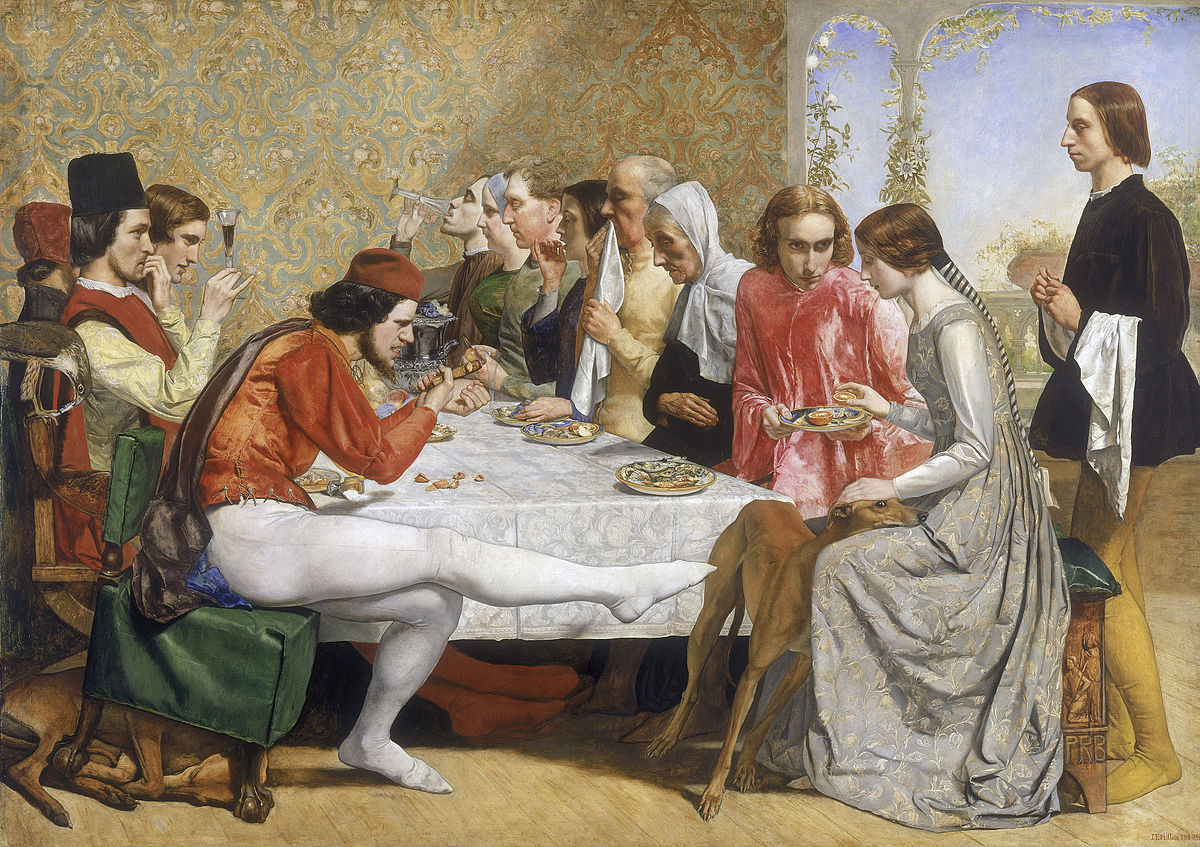The Art: Isabella
The Artist: John Everett Millais
About the Work:
Even the most celebrated art begins life as an intensely personal project for the artist.
John Everett Millais was only 19 in 1849, the year he commenced work on Isabella. The painting, based on a story first told in Giovanni Boccaccio’s 14th century classic Decameron, had recently seen a resurgence in popularity following its retelling in a poem by John Keats, entitled Isabella, or the Pot of Basil.
In the tale, Isabella is set to be married off to a rich household, but instead finds love with Lorenzo, a poor apprentice working with one of her brothers. When the brothers learn of this romance, they kill Lorenzo, and bury his body in the forest. Lorenzo’s ghost visits Isabella, and tells her what has unfolded. Digging up her lover’s corpse, Isabella takes the head, and hides it in a pot of basil, which she pines over relentlessly.
Though Keats’s poem only fleeting touches on the moment that gave away the young couple, Millais creates an image from it that embodies the entire story.
Note Lorenzo, on the right. He is draped in red, a hint at his bloody end. Almost all of his body is covered in the red fabric, except for his head. To Isabella he offers a sliced blood orange, another symbol of death.
He looks at her intensely, while above their head vines of white rose and passionfruit intertwine in the window arch. There is no mistaking there love.
On the other side of the table – the shorter side, as a result of Millai’s use of distorted perspective – the three brothers each react to the revelation differently. The first cracks a nut, and threatens to kick Isabella’s dog. The second one is far more sly. He watches the pair through a glass, as if he were an assassin assessing his prey. The third leans forward with a subtle smile. Perhaps he, hidden mostly behind his siblings, is the most dangerous of all.
There is something more to the depiction of the brothers than these immediately obvious elements. Something that took art historians over 150 years to see.
Can you tell what it is?
Look at the first brother again. Notice the shadow on the table, near his crotch.
The shadow is phallic, and clearly by design. Some salt is being spilled on the shadow, as if to symbolise the act of sex itself.
This single detail, first spotted in 2012, redefined the story of Isabella.
Now the first brother’s leg takes on a sexual aggressiveness. The same for the second brother’s feet. He might be playing coy, but his feet point threateningly at Lorenzo.
Is there a sexual aspect to their jealousy? Is Millais suggesting the trio’s need to assert their masculinity is the reason they terminate the affair?
We will never know for sure.
Whatever Millais was hinting at, he took the answer to his grave.
A single detail, however simple, can redefine a tale first told nearly 700 years ago. This is the power of adaptation. This is the power of art.

